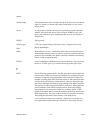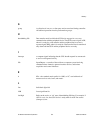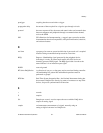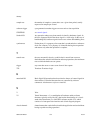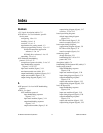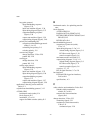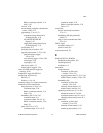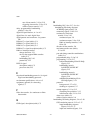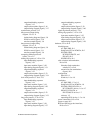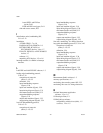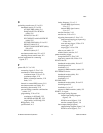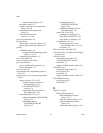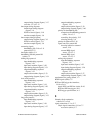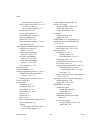Index
© National Instruments Corporation I-3 653X User Manual
DMA or interrupt transfers, 2-31
finite, 2-30
overview, 2-26
port and timing controller combinations
(table), 2-26 to 2-27
programming, 2-31 to 2-33
continuous change detection in
NI-DAQ (figure), 2-32
LabVIEW/LabVIEW RT
(figure), 2-33
single buffer change detection in
NI-DAQ (figure), 2-32
specifications, A-3
specifying lines to monitor, 2-27
triggering data transfer, 2-27 to 2-30
pattern-matching trigger,
2-29 to 2-30
start and stop trigger, 2-28 to 2-29
start trigger, 2-28
stop trigger, 2-28
when to use (table), 2-1
width of data to acquire, 2-26
clocks, for RTSI and PXI trigger bus
interfaces, D-10
CompactPCI, using with PXI, B-1
configuration, 653X devices
Mac OS, 1-9
Windows, 1-8 to 1-9
connecting signals. See signal connections.
continuous or finite data transfer
change detection, 2-30 to 2-31
continuous input, 2-30
DMA or interrupt transfers, 2-31
finite, 2-30
handshaking I/O, 2-9 to 2-10
continuous input, 2-9
continuous output, 2-9 to 2-10
DMA or interrupt transfers, 2-10
finite, 2-9
pattern I/O, 2-21 to 2-22
continuous input, 2-21 to 2-22
continuous output, 2-22
DMA or interrupt transfers, 2-22
finite, 2-21
control lines
Group1 and Group2 controllers,
1-1to1-2
handshaking I/O and pattern I/O
(table), C-1
using as extra unstrobed data lines,
2-3to2-4
CPULL signal
description (table), C-5
power-on state, D-5
customer education, F-1
D
DAQCard-6533 for PCMCIA
benchmark results (table), E-6
block diagram, D-2
installation, 1-8
data transfer
change detection
continuous or finite data
transfer, 2-30 to 2-31
triggering data transfer, 2-27 to 2-30
width of data to acquire, 2-26 to 2-27
handshaking I/O
continuous or finite data
transfer, 2-9 to 2-10
direction of data transfer, 2-6
width of data to transfer, 2-6
optimizing transfer rates, E-1 to E-9
benchmark results, E-3 to E-9
maximum transfer rates, E-1 to E-2
obtaining fastest transfer rates, E-2
pattern I/O
continuous or finite data
transfer, 2-21 to 2-22
direction of data transfer, 2-18
monitoring data transfer, 2-23



